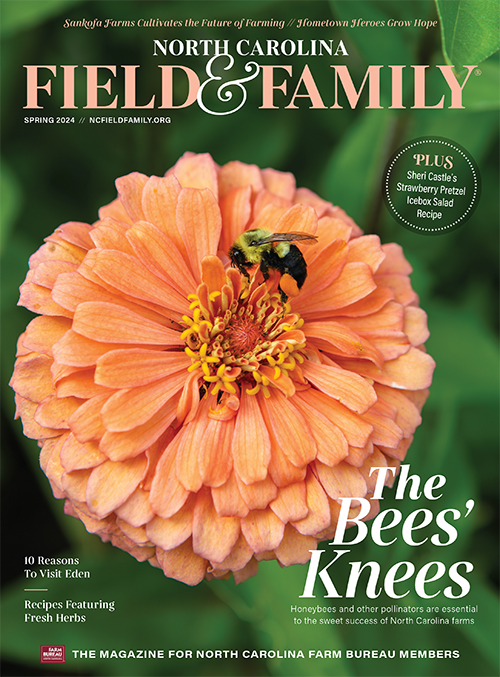North Carolina Oyster Farmers are Shelling It Out
Oyster farming brings local food, sustainability to North Carolina
Christy Lynch |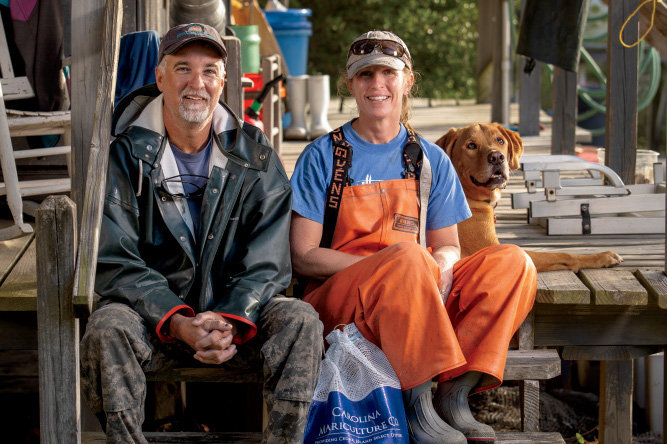
No trip to the North Carolina coast would be complete without shucking a few oysters. Whether baked or raw, smothered in cocktail sauce or butter, the oysters you get from your favorite seaside oyster bar probably aren’t even from North Carolina – but the North Carolina Coastal Federation is working to change that.
At the turn of the twentieth century, North Carolina oyster workers harvested about 800,000 bushels of oysters a year. These days, the state only produces 15 or 20 percent of that – well below what people’s appetites demand. To make up the difference, approximately 75 percent of the oysters consumed in North Carolina are imported from other states.
That’s where the North Carolina Coastal Federation comes in. They believe North Carolina has what it takes to become the “Napa Valley” of oysters, and they’ve put together a strategy to make it happen. The Oyster Restoration and Protection Plan for North Carolina is a seven-step “blueprint” to combat habitat loss, overharvesting, poor water quality and other factors that have contributed to the decline of North Carolina’s oyster populations.
The plan’s approach is twofold: to rehabilitate coastal habitats so more wild oysters will grow, and to encourage oyster mariculture in the region until the number of farmed oysters meets or exceeds those harvested from the wild.
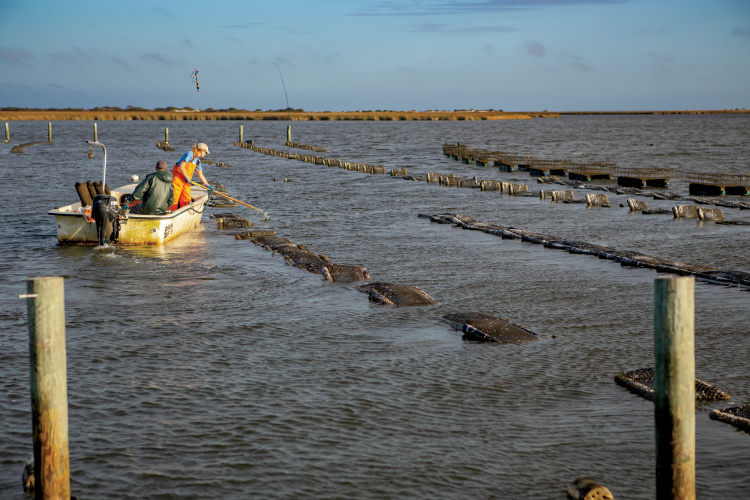
Oysters in the Wild
The blueprint, initially launched in 2003, has the primary goal of establishing more permanent oyster sanctuaries in North Carolina’s waters. By 2016, 189.46 acres of sanctuaries had been built, and more are in the works.
What’s the big deal about having more oysters around, you ask? As it turns out, oysters have a lot more to offer than just tasting delicious with dry white wine. A single adult oyster can filter sediment, pollutants and algae from as many as 50 gallons of water a day, significantly improving coastal water quality.
The North Carolina Coastal Federation launched a campaign in 2017 to add 50 million oysters to the state’s sounds by 2020. That’s enough to filter an estimated 2.5 billion gallons of water every day – providing cleaner water and better fish habitat, and contributing to a stronger commercial and tourism economy.
In addition to creating these “no-take” oyster sanctuaries, the blueprint also outlines actions for restoring oyster reefs that are open to public harvest.
Oyster reefs form when their larvae attach to beds of cultch – a hard aggregation of oyster shells, marine limestone and clamshells. To encourage more oysters to grow in the wild, the Division of Marine Fisheries plants up to 100 acres of cultch from the Shallotte River to Pamlico Sound each year. By dumping bushels of cultch into the water, they create new habitats just right for oyster larvae to latch onto and populate.
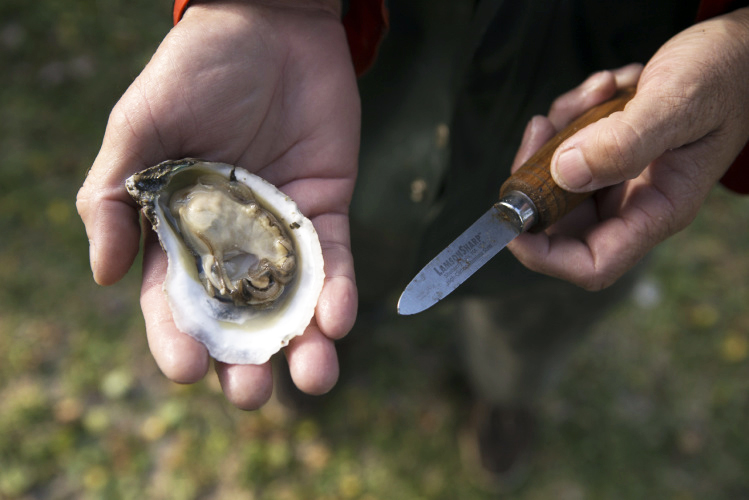
Oysters on the Farm
Improving the conditions for wild oyster growth is important, but the future of North Carolina’s oyster production really depends on the development of its oyster mariculture industry.
Jay Styron is a North Carolina oyster farmer who’s leading the way. He’s the co-owner of Carolina Mariculture Co. on Cedar Island, which has now been in operation for almost 11 years.
“When you take an oyster out of the wild, you also take habitat for other species and the basis for other oysters to grow,” Styron says. “Farming is a totally sustainable way to grow oysters and provide the market with a high-quality, year-round local product.”
Styron uses a floating cage system to grow his oysters. He describes it like a clothesline that runs between two poles, with cages floating on the water’s surface along each line. Floating close to the surface means the oysters are in the warmest temperature and best-quality water throughout the year, which allows the oysters to grow more quickly.
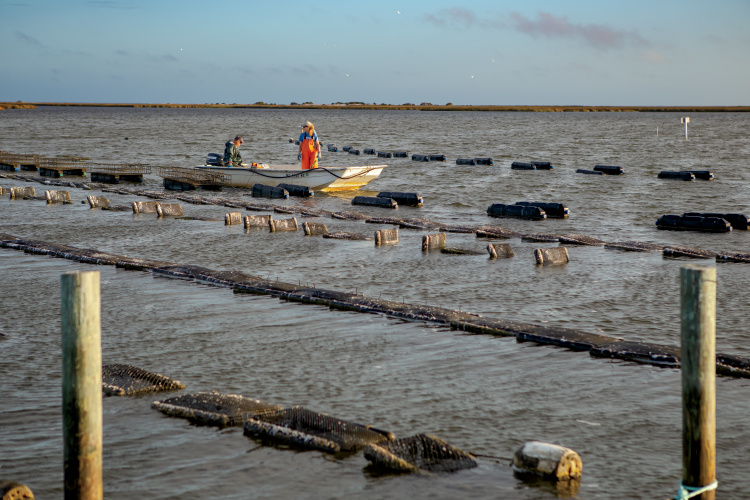
“Traditional oyster farming involves scattering oyster shell or other material on the bottom and letting wild oysters populate the material,” he says. “This is hit or miss and takes up to three years to get a crop that isn’t that reliable. Today, with hatcheries producing fast-growing, disease-resistant (larvae), we can put them in our cages and protect them from predators and have a more consistent crop in half the time.”
To encourage North Carolinians to get into the oyster business, the state is providing private leases on public water for those who want to farm oysters – and the initiative appears to be working. In 2016, there was a fourfold increase in lease applications compared to the previous five years.
This increased interest in oyster farming has brought North Carolina one step closer to becoming the Napa Valley of oysters. Coastal Provisions Oyster Bar and Wine Bar Café in Southern Shores, for example, serves 18 kinds of oysters. In 2013, the restaurant struggled to offer even one locally sourced oyster. Today, 11 of the oysters on their menu are from North Carolina.
– Christy Lynch


